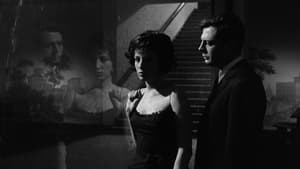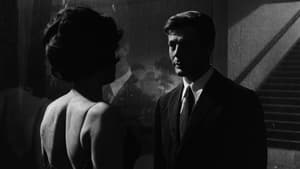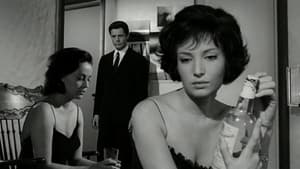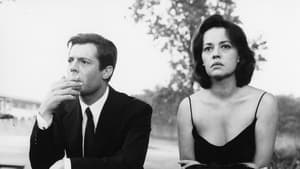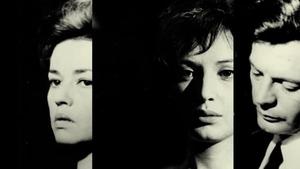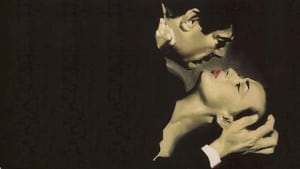Contact: [email protected]
Video Sources 0 Views
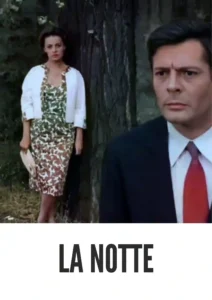
Synopsis
The Early Colored Elegance of La Notte 1961: A Cinematic Journey

Introduction
In the annals of classic cinema, La Notte 1961 stands as a beacon of artistic prowess and storytelling mastery. Directed by Michelangelo Antonioni, this Italian masterpiece transcends the boundaries of time and space, inviting audiences into a world of love, longing, and existential contemplation. However, what truly sets La Notte 1961 apart is its early colored version, which adds a new layer of depth and beauty to the film’s already mesmerizing narrative. In this article, we embark on a journey to explore the profound impact of colorization on the viewing experience of La Notte 1961, delving into its historical significance, cinematic legacy, and enduring appeal.
Check The Full Colorized Movies List
Check Our Colorized Movies Trailer Channel
Understanding La Notte 1961: Director, Cast, and Genre
At the helm of La Notte 1961 is the visionary director Michelangelo Antonioni, whose meticulous attention to detail and unflinching exploration of the human condition have cemented his status as one of cinema’s greatest auteurs. With a stellar cast led by Marcello Mastroianni and Jeanne Moreau, La Notte 1961 unfolds as a poignant meditation on love, marriage, and the search for meaning in a world fraught with uncertainty.
Antonioni’s direction imbues La Notte 1961 with a sense of haunting beauty and existential angst, as he captures the ennui and disillusionment of post-war Italy with breathtaking precision. Mastroianni and Moreau deliver powerhouse performances as Giovanni and Lidia, a married couple grappling with the disintegration of their relationship against the backdrop of a single day and night in Milan.
Exploring the World of La Notte 1961: Plot and Characters
Set against the backdrop of a single day and night in Milan, La Notte 1961 follows the unraveling marriage of Giovanni and Lidia, played with remarkable depth and nuance by Mastroianni and Moreau, respectively. As the couple navigates the emotional complexities of their relationship, they encounter a cast of characters whose lives intersect and intertwine in unexpected ways. From the enigmatic Valentina to the troubled novelist Tommaso, each character in La Notte 1961 adds a layer of richness and complexity to the film’s intricate tapestry of human experience.
The narrative unfolds with a languid, dreamlike quality, as Antonioni explores themes of alienation, desire, and existential despair with a subtlety and nuance that is both captivating and thought-provoking. Through its evocative imagery and understated performances, La Notte 1961 invites audiences to ponder the mysteries of human existence and the elusive nature of happiness.
The Art of Film Colorization
Film colorization is a process that involves adding color to black and white footage, thereby transforming the visual aesthetic of a film. While purists may argue that colorization alters the artistic integrity of the original work, proponents of the practice contend that it offers a fresh perspective on classic films, making them more accessible to modern audiences.
The process of colorization requires careful attention to detail and artistic judgment, as filmmakers must balance the desire to enhance the visual appeal of a film with the need to preserve its original tone and atmosphere. When done tastefully and with respect for the source material, colorization can breathe new life into classic films, allowing audiences to experience them in a whole new light.
Early Colored Films: A Brief History
The history of early colored films is a fascinating journey through the evolution of cinematic technology and artistic innovation. From the hand-tinted hues of silent-era classics to the vibrant palettes of early Technicolor productions, filmmakers have long experimented with color to enhance the visual impact of their work. As advances in technology have made colorization more accessible and sophisticated, filmmakers have embraced the opportunity to reimagine classic films in bold new ways.
La Notte 1961 joins a distinguished lineage of early colored films that have left an indelible mark on the history of cinema. From the lush landscapes of The Wizard of Oz to the moody streets of Casablanca, early colored films have captivated audiences with their vivid imagery and timeless storytelling, paving the way for future generations of filmmakers to explore the boundless possibilities of color.
La Notte 1961 and Its Early Colored Version
In a bold departure from convention, La Notte 1961 was released in a colorized format, offering audiences a fresh perspective on Antonioni’s timeless meditation on love and loneliness. The decision to add color to the film was met with both praise and skepticism, with some critics hailing it as a triumph of visual storytelling and others decrying it as a betrayal of the original vision. However, the early colored version of La Notte proved to be a revelation, breathing new life into the film’s iconic imagery while preserving its emotional resonance and thematic depth.
The early colored version of La Notte 1961 invites audiences to rediscover Antonioni’s timeless masterpiece in a whole new light. By reimagining the film’s iconic imagery in vibrant hues, colorization adds a new layer of visual richness and emotional depth to the viewing experience, allowing audiences to immerse themselves in the world of La Notte like never before.
The Debate Over Film Colorization
The debate over film colorization is a contentious one, with passionate arguments on both sides of the aisle. While some view colorization as a valuable tool for preserving and reimagining classic films, others see it as a form of artistic sacrilege that diminishes the integrity of the original work. As the debate rages on, filmmakers and audiences alike are left to grapple with questions of authenticity, artistic intent, and the ever-shifting boundaries of cinematic innovation.
Examining La Notte 1961 as an Early Colored Film
Viewing La Notte 1961 in its early colored iteration offers a fresh perspective on Antonioni’s masterful exploration of love and alienation. While purists may prefer the film’s original black and white aesthetic, the addition of color adds a new layer of visual richness and emotional depth to the viewing experience. Whether experienced in vibrant hues or stark monochrome, La Notte 1961 remains a timeless testament to the power of cinema to capture the complexities of the human heart.
The early colored version of La Notte 1961 preserves the film’s original tone and atmosphere while enhancing its visual appeal for modern audiences. By striking a delicate balance between artistic innovation and respect for the source material, colorization allows viewers to experience Antonioni’s masterpiece in a whole new light, reaffirming its status as one of cinema’s most enduring classics.
Influence and Legacy: La Notte 1961’s Impact on Cinema
La Notte 1961 has left an indelible mark on the world of cinema, inspiring generations of filmmakers and reshaping the landscape of international cinema. Antonioni’s innovative approach to storytelling and visual composition has influenced filmmakers around the globe, leaving behind a legacy that continues to resonate with audiences to this day.
Antonioni’s Cinematic Legacy: Beyond La Notte 1961
While La Notte 1961 stands as a crowning achievement in Antonioni’s illustrious career, its legacy is but a small part of his enduring impact on world cinema. From the existential angst of L’Avventura to the enigmatic beauty of Blow-Up, Antonioni’s films continue to captivate audiences with their haunting imagery and profound insights into the human condition.
Themes Explored in La Notte 1961
At its core, La Notte 1961 is a meditation on the fragility of human relationships and the search for meaning in a world devoid of certainty. Through its evocative imagery and understated performances, the film explores themes of love, loss, and the inexorable passage of time with a depth and complexity that resonate with audiences of all ages.
Reception and Controversy Surrounding La Notte 1961
Upon its release, La Notte 1961 received widespread critical acclaim for its groundbreaking visual style and thought-provoking narrative. However, the decision to release the film in a colorized format sparked controversy among purists and scholars, reigniting the age-old debate over the preservation of cinematic heritage. Despite the initial backlash, the early colored version of La Notte found a new audience, introducing Antonioni’s timeless masterpiece to a new generation of viewers.
Where to Watch La Notte 1961 Online
For those eager to experience the timeless brilliance of La Notte 1961, the film is readily available on popular streaming platforms, ensuring that audiences old and new can immerse themselves in Antonioni’s cinematic masterpiece with ease.
FAQs About La Notte 1961
For curious cinephiles seeking answers to burning questions about La Notte 1961, we’ve compiled a list of frequently asked questions to shed light on the film’s history, production, and enduring legacy.
Conclusion
In conclusion, La Notte 1961 stands as a timeless testament to the power of cinema to capture the complexities of the human experience. Whether viewed in its classic black and white form or its early colored iteration, Antonioni’s masterpiece continues to inspire and enthrall audiences around the world, reminding us of the enduring power of art to transcend time, space, and technology. As we reflect on the legacy of La Notte 1961 and the ongoing debate surrounding film colorization, let us celebrate the boundless creativity of filmmakers like Antonioni and the timeless beauty of one of cinema’s most beloved classics.
